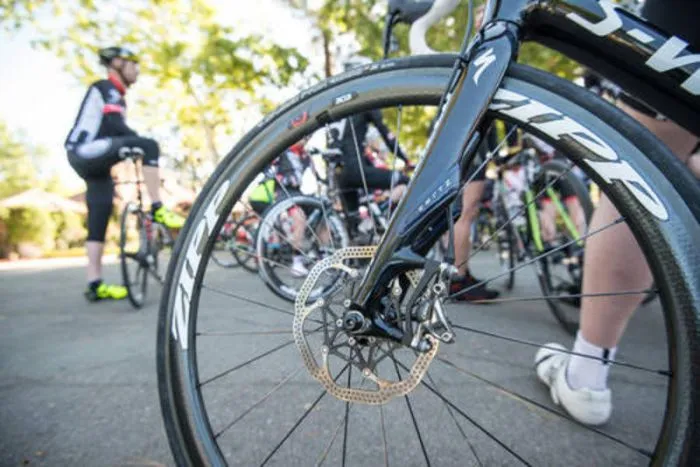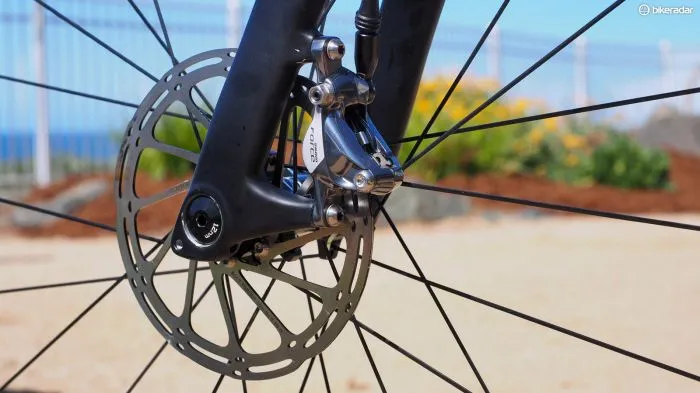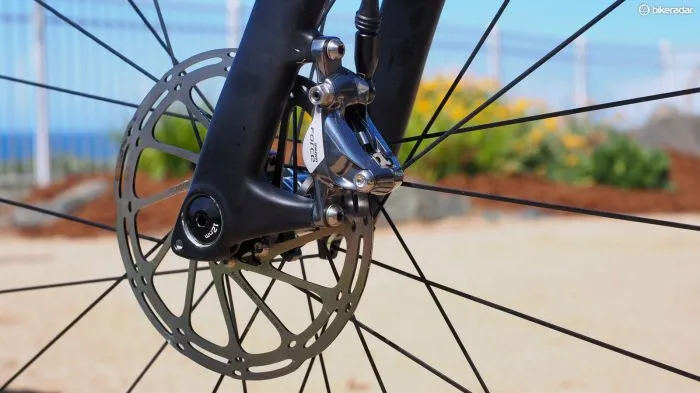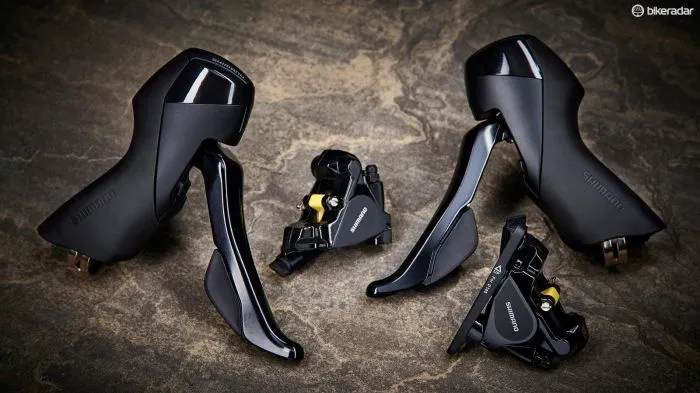Hydraulic road disc brakes are now a reality from Shimano, SRAM and Campagnolo. But how, we hear you ask, do they compare?
Related: Campagnolo turns up to the road disc brake party at last
Well given that Campag only just confirmed its versions – and was more than a little cagey with the press – it's a little premature to give a definitive verdict. For now though, we’ll run you through what we do know…

How do Campagnolo’s road disc brakes compare to those from SRAM and Shimano? Read on…
Launch dates
SRAM was first out of the blocks with hydraulic road disc brakes, launching them on the top-tier Red 22 groupset back in late 2012. It’s since trickled the technology down its groupset hierarchy, meaning that at the time of writing there are four SRAM groupsets with hydraulic disc braking: Red 22, Force 22, Rival 22 and Apex 1 (the number denotes the number of gears).
It took Shimano a little longer to get its own hydraulic road disc brakes to market, launching the acclaimed R785 system in 2013 as a Di2-only version (so electronic shifting, hydraulic braking).
That's since been followed up by an Ultegra-level version called RS685 that’s compatible with 11-speed mechanical shifting, and early this year there came a more affordable version (think 105-level) that’s also compatible with 11speed mechanical shifting.
Related: Campagnolo launches Potenza 11spd group pitched against Shimano Ultegra
So with all that said, fans of shiny Italian components were beginning to feel left out. Not any more though – Campagnolo confirmed its own road disc brakes at a recent press camp in the Canary Islands, and we can’t wait to have a ride on them.
Problems

So why has it taken Campagnolo so long to get skin in the game? Well, it hasn’t all been plain sailing for its competitors – SRAM was forced to recall all of its hydraulic road brakes at the end of 2013 due to safety concerns, costing the American brand a reported $10-15m. It's since left those troubles behind, and racked up some impressive reviews for its hydraulic disc brakes.
Shimano hasn’t suffered the same ignominy of a total recall, and Campagnolo reps went so far as to tell us at their big press reveal that the Italians have observed the competition and have “no intention of ever going through a product recall”.
Features of note

Shimano's RS505 hydraulic disc brake levers have… distinctive-looking hoods
Shimano had already garnered some very favourable reviews for its Ultegra-level hydraulic road disc brakes – in electronic and mechanical shifting variants – before dropping the news that a more affordable 105-level version was coming. That turned out to be true in a big way – as in, the hoods are noticeably larger.
Now it’s unfair to expect similar levels of finesse from what is undoubtedly a more lower-tier offering, but many riders excited by the prospect of 105-level hydraulic came to earth with a jolt when they realised the much-anticipated RS505 brake levers look quite different. Performance remains excellent however, and you still get heat-dumping fins on the pads for long descents.
For SRAM, those features of note include 160mm rotors (read: bigger, better), steel-backed organic pads and an open hydraulic system with DOT fluid. They do lack a mechanical barrel adjuster that can move the brake pads closer or farther away from the rim, should you need to adjust them mid-ride, but that’s not a dealbreaker.
And Campagnolo? Well until now the biggest feature of note was its absence from the market. We now know they’ll come in mechanical and electronic EPS variants, and will be compatible with flat- or post-mount setups… and that’s about it for now, in terms of specifics. Watch this space.
While we wait, why not bring yourself up to speed with our complete guide to Everything you need to know about road disc brakes.



